Pens are an essential tool for writing, whether you're jotting down notes, signing documents, or expressing your creativity. However, with the wide variety of pens available today, it can be overwhelming to choose the right one for your needs. In this article, we will explore different types of pens, their unique features, and their suitability for various tasks. By the end, you'll have a better understanding of the options available, helping you make an informed decision when it comes to selecting the perfect pen.
Ballpoint Pen
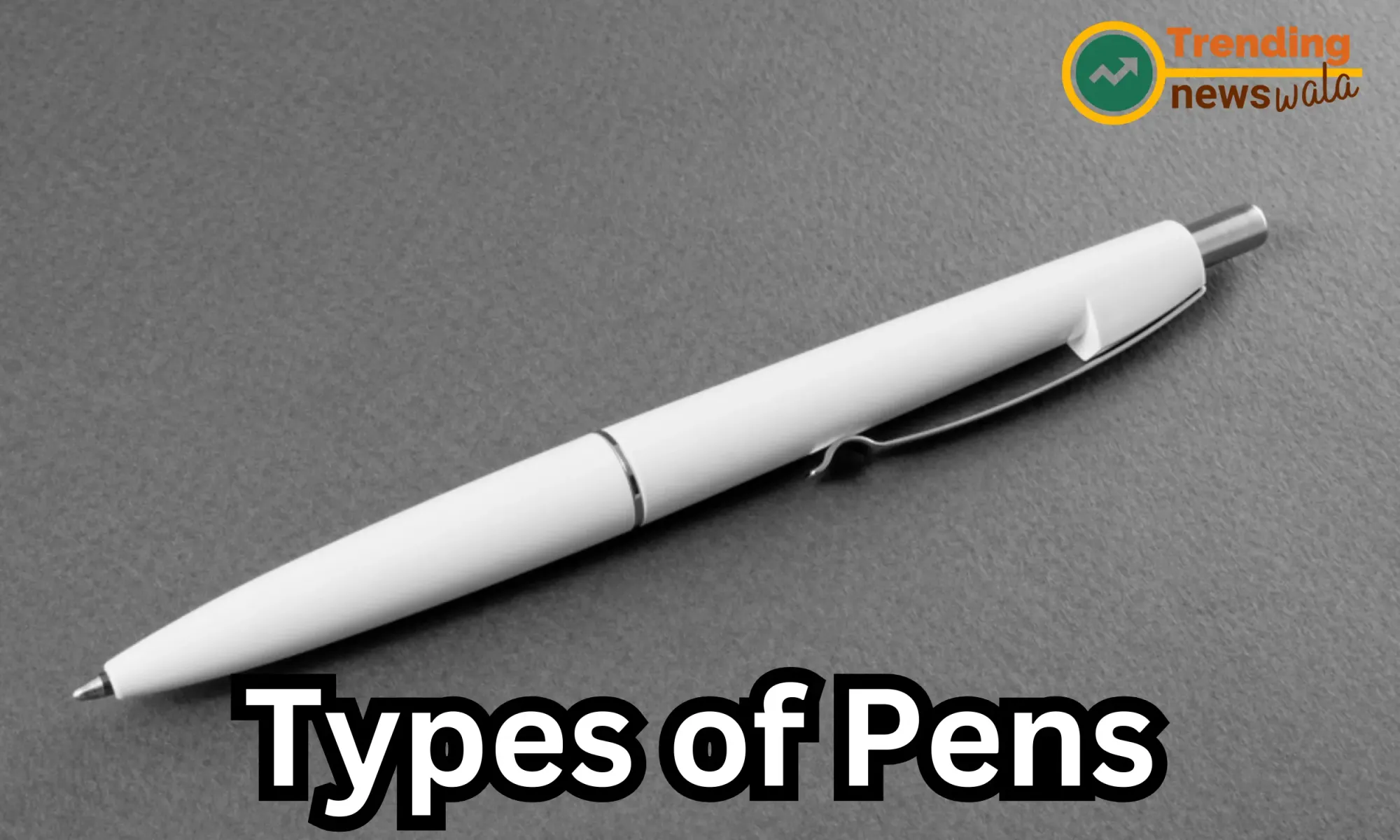
A ballpoint pen is a widely used writing instrument that operates using a tiny ball bearing in the pen's tip to distribute ink as you write. Here are some key points about ballpoint pens:
- Ink Type: Ballpoint pens typically use oil-based ink. This type of ink dries quickly and is less likely to smudge compared to other ink types.
- Reliability: Ballpoint pens are known for their reliability and durability. They are less prone to leaking or drying out compared to some other pen types.
- Ink Color: Ballpoint pens are available in a wide range of ink colors, although the most common color is blue or black.
- Writing Surface: They are suitable for a variety of writing surfaces, including paper, cardboard, and some glossy or non-absorbent materials.
- Maintenance: Ballpoint pens are relatively low-maintenance. You can replace the ink cartridge or refill the pen when the ink runs out, and the pen can last for a long time.
- Varieties: There are different varieties of ballpoint pens, including retractable pens with a clickable mechanism, twist-action pens, and capped pens.
- Use Cases: Ballpoint pens are widely used for everyday writing tasks, note-taking, filling out forms, and more. They are especially popular for their convenience and reliability.
- Variations: There are variations of ballpoint pens, such as fine point and medium point pens. The tip size can affect the line width and writing experience.
- Environmental Considerations: While ballpoint pens are durable and long-lasting, the disposable nature of many ballpoint pens contributes to plastic waste. Consider reusable or refillable options to reduce environmental impact.
Advantages:
- They write smoothly and are less prone to skipping.
- The ink dries quickly, reducing the risk of smudging.
- They are often affordable and widely available.
- Ballpoint pens tend to have a long shelf life, making them suitable for occasional use.
Disadvantages:
- The ink may not be as vibrant or smooth as that of other pen types like gel pens or fountain pens.
- They may not provide the same level of line variation and expression as other pens, making them less suitable for artistic or calligraphic work.
In summary, ballpoint pens are a reliable and practical choice for everyday writing needs. They are widely available, come in various styles, and are known for their longevity and resistance to smudging. However, they may not offer the same level of writing expressiveness as other pen types, making them less suitable for artistic or calligraphic tasks.
Gel Pen
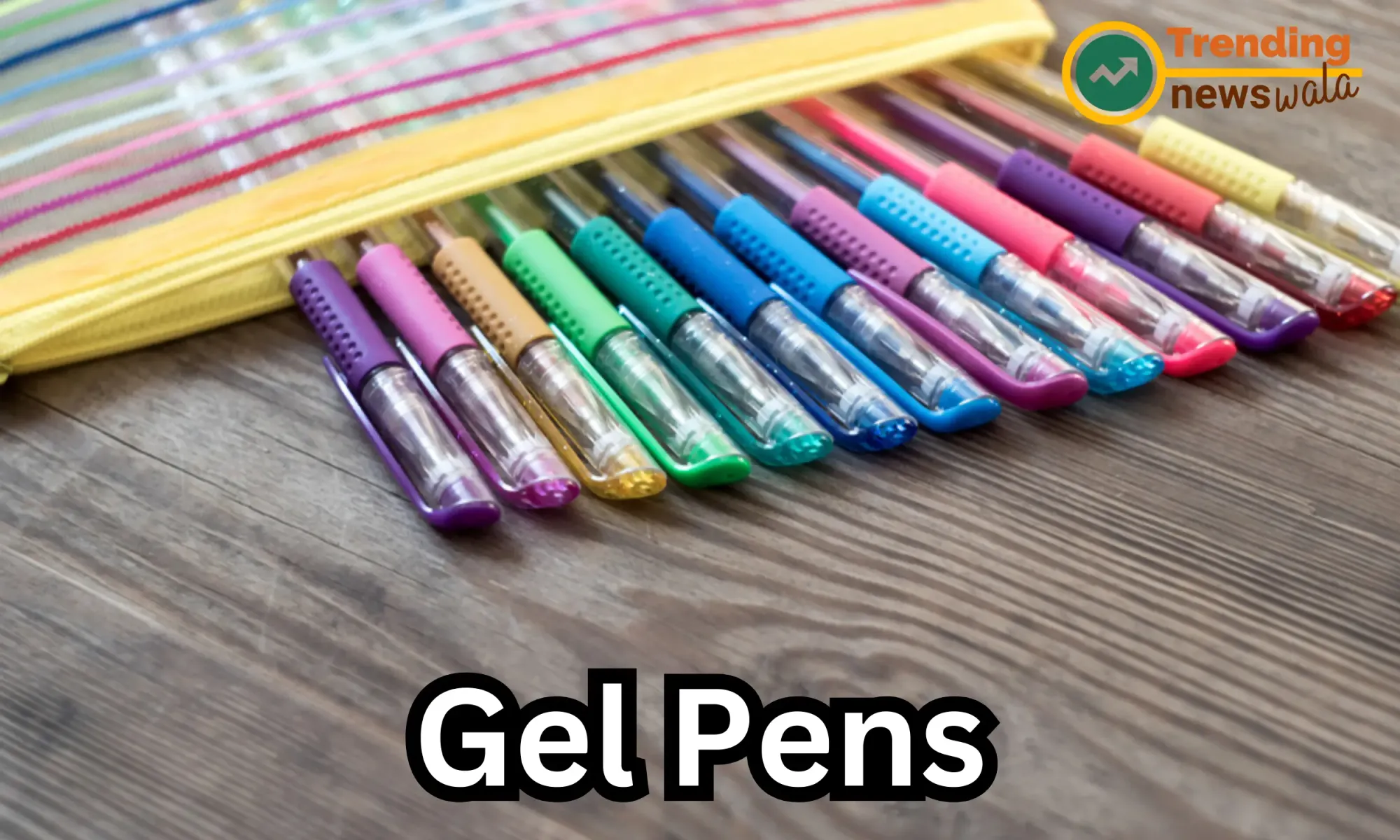
A gel pen is a popular writing instrument that uses a water-based gel ink to produce smooth, vibrant lines. Here are some key features and information about gel pens:
- Ink Type: Gel pens use a water-based gel ink, which is known for its smooth and consistent flow. This gel ink is thicker and more viscous than the ink used in ballpoint pens.
- Vibrant Colors: Gel pens are available in a wide range of colors, including neon, metallic, and pastel shades. This makes them a favorite choice for artists, students, and those who enjoy colorful writing.
- Smooth Writing: Gel pens are appreciated for their smooth writing experience. The gel ink flows effortlessly onto the paper, resulting in clean and crisp lines.
- Line Consistency: Gel pens typically produce consistent and even lines, making them suitable for detailed writing, note-taking, and precise drawing.
- Variety of Tip Sizes: Gel pens come in various tip sizes, including fine, medium, and broad. The tip size affects the line width, allowing users to choose the most suitable pen for their needs.
- Quick Drying: Gel ink dries relatively quickly, reducing the risk of smudging. However, it may not dry as fast as ballpoint ink.
- Versatility: Gel pens can be used on various writing surfaces, including paper, cardboard, envelopes, and even some glossy materials.
- Applications: Gel pens are versatile and can be used for a wide range of tasks, including note-taking, journaling, coloring, and drawing. They are a favorite among students and professionals.
- Special Effects: Some gel pens offer special effects, such as glitter, metallic, and scented inks. These are popular for adding a unique touch to artwork and writing.
- Maintenance: Gel pens are relatively low-maintenance. They are available in both disposable and refillable versions. Refillable gel pens are more environmentally friendly.
- Environmental Considerations: Gel pens can contribute to plastic waste, especially if they are disposable. Choosing refillable gel pens or pens made from recycled materials can be more eco-friendly.
Advantages:
- Smooth writing experience.
- Wide range of ink colors.
- Suitable for a variety of creative and professional applications.
- Consistent lines and good coverage.
Disadvantages:
- The gel ink may run out faster than the ink in ballpoint pens.
- Some gel pens may be more prone to skipping or blotting.
- Gel ink may be more susceptible to drying out if the cap is not securely replaced.
In summary, gel pens are known for their smooth writing, vibrant colors, and versatility. They are a popular choice for various writing and creative tasks and are available in a wide range of colors and tip sizes to suit different preferences and needs.
Fountain Pen
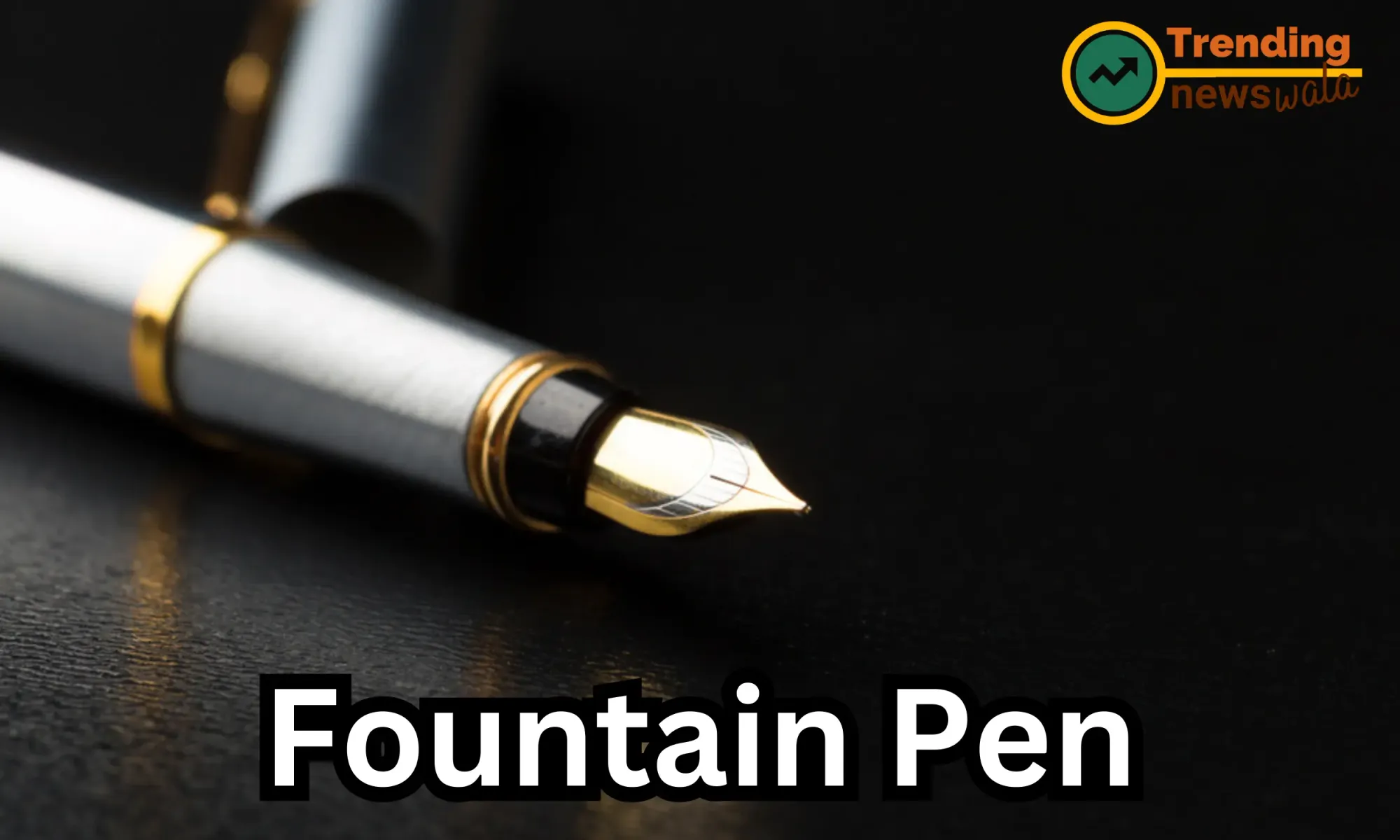
A fountain pen is a sophisticated writing instrument that uses a nib to dispense liquid ink onto paper. It offers a unique and elegant writing experience. Here are some key features and information about fountain pens:
- Ink Type: Fountain pens use liquid ink, typically water-based. This ink flows from a refillable ink reservoir or converter through a feed and onto the paper via a nib.
- Nib Varieties: Fountain pens come with a variety of nibs, including fine, medium, broad, and italic nibs. Nib size affects line width and writing style.
- Ink Flow: Fountain pens are known for their smooth and consistent ink flow, resulting in a unique writing experience that many enthusiasts appreciate.
- Line Variation: Fountain pens can provide line variation based on the angle and pressure applied while writing. This allows for expressive handwriting and artistic lettering.
- Refillable: Most fountain pens are refillable, allowing you to use bottled ink or ink cartridges. This reduces waste and allows for a wide range of ink color choices.
- Ink Colors: Fountain pen users have access to a wide range of ink colors, including traditional and specialty inks such as shimmering and scented varieties.
- Elegance and Design: Fountain pens are often prized for their elegant and aesthetic designs. They come in a variety of materials, including metal, acrylic, and precious metals like gold and silver.
- Maintenance: Fountain pens require more maintenance than other pens. Regular cleaning and flushing are necessary to keep the ink flowing smoothly and prevent clogs.
- Versatility: Fountain pens can be used for various tasks, including daily writing, lettering, calligraphy, and artistic expression.
- Customization: Some fountain pen enthusiasts seek customization by choosing unique nibs, inks, and pen designs to match their personal style and writing preferences.
- Environmental Considerations: Using a refillable fountain pen with bottled ink can be more environmentally friendly than disposable pens. Many fountain pen enthusiasts promote sustainability through their choices.
Advantages:
- Smooth and expressive writing experience.
- Line variation for artistic and decorative writing.
- Refillable, reducing waste and allowing for ink variety.
- Elegant and customizable designs.
Disadvantages:
- Requires more maintenance, including cleaning and refilling.
- Higher upfront cost for quality fountain pens.
- Potential for ink smudging, especially with slow-drying inks.
In summary, fountain pens are known for their elegance, smooth writing experience, and customization options. They are favored by individuals who appreciate the art of handwriting and seek a unique and expressive tool for their writing needs, whether for daily use or artistic expression.
Rollerball Pen
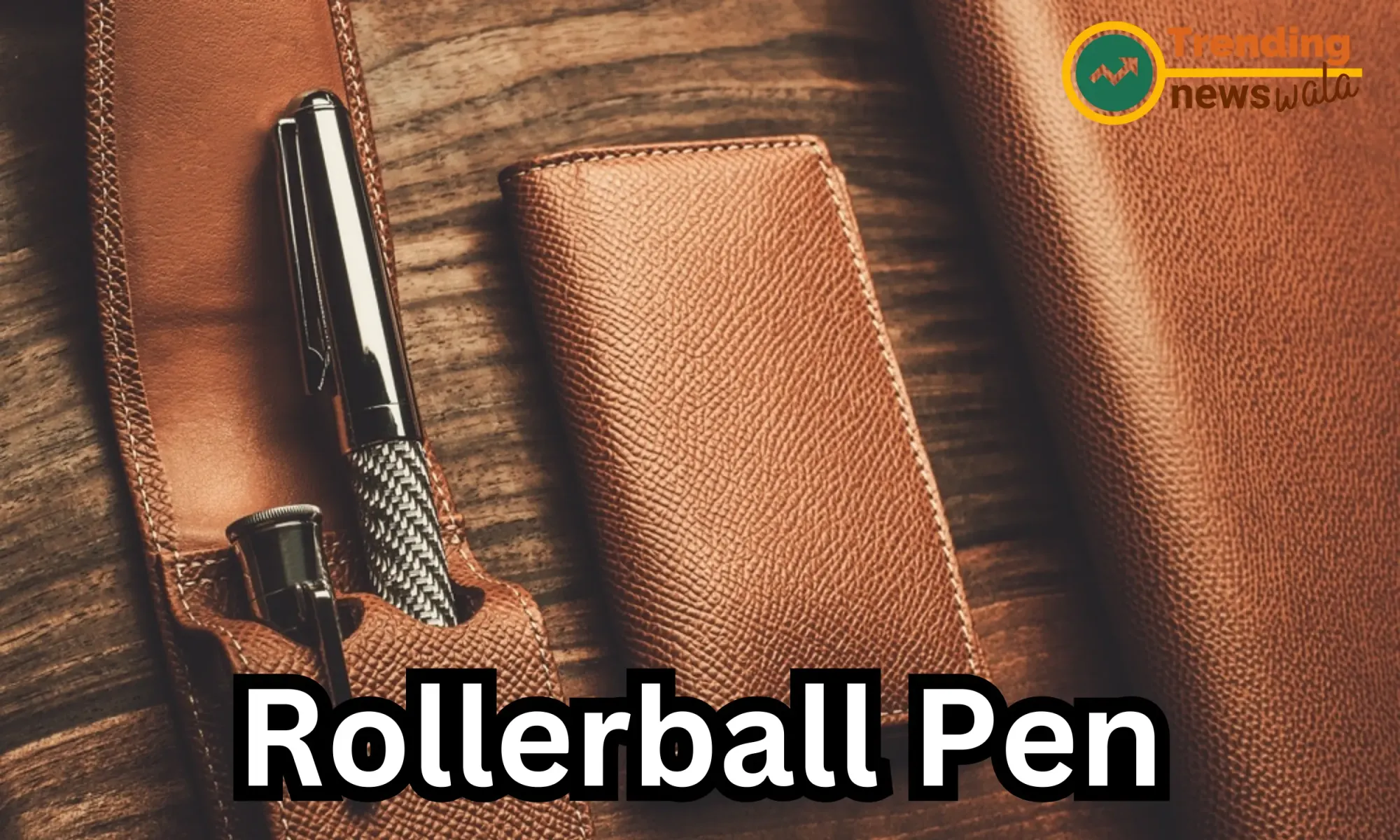
A rollerball pen is a type of writing instrument that combines the smooth writing experience of a fountain pen with the convenience of a ballpoint pen. Here are some key features and information about rollerball pens:
- Ink Type: Rollerball pens use liquid or gel ink, which is water-based or gel-based. This type of ink offers a smooth, fluid writing experience, similar to that of a fountain pen.
- Smooth Writing: Rollerball pens are known for their exceptionally smooth writing experience. The liquid or gel ink flows effortlessly onto the paper, resulting in clean and consistent lines.
- Ink Reservoir: Rollerball pens typically have a refillable ink reservoir that allows you to use bottled ink. Some rollerball pens also use disposable ink cartridges.
- Quick Drying: The ink used in rollerball pens dries relatively quickly, reducing the risk of smudging compared to fountain pens.
- Line Consistency: Rollerball pens produce consistent and even lines, making them suitable for detailed writing, note-taking, and precise drawing.
- Variety of Tip Sizes: Rollerball pens come in various tip sizes, including fine, medium, and broad. The tip size affects the line width, allowing users to choose the most suitable pen for their needs.
- Ink Colors: Rollerball pens offer a wide range of ink colors, including traditional and specialty inks such as metallic and scented varieties.
- Applications: Rollerball pens are versatile and can be used for a wide range of tasks, including daily writing, journaling, artwork, and creative projects.
- Maintenance: Rollerball pens are relatively low-maintenance. Refillable rollerball pens allow users to choose from various ink colors and brands.
- Environmental Considerations: Using refillable rollerball pens can be more eco-friendly compared to disposable pens. Many rollerball pens are designed for easy refilling.
Advantages:
- Smooth writing experience comparable to a fountain pen.
- Wide range of ink colors.
- Versatile for various writing tasks.
- Consistent lines and good coverage.
Disadvantages:
- The ink may not be as quick-drying as that of ballpoint pens.
- Gel ink can run out relatively faster than ballpoint ink.
- Some rollerball pens may be more prone to skipping or blotting if not properly maintained.
In summary, rollerball pens provide a smooth and consistent writing experience, making them a popular choice for those who enjoy the fluidity of liquid or gel ink. They are versatile and come in various tip sizes and ink colors, allowing users to select the pen that best suits their preferences and writing needs.
Felt-Tip Pen

Felt-tip pens, also known as marker pens, are writing and drawing instruments that use a porous, felt-like material as the tip to dispense ink. These pens are versatile and come in various tip sizes and ink types. Here's more information about felt-tip pens:
- Ink Type: Felt-tip pens can use different types of ink, including water-based, alcohol-based, or permanent ink. The type of ink used affects drying time, smudging, and suitability for different surfaces.
- Smooth Flow: Felt-tip pens are known for their smooth ink flow, which results in even and consistent lines. The porous felt tip allows for precise and controlled writing or drawing.
- Variety of Tip Sizes: Felt-tip pens are available in a range of tip sizes, from fine to broad. The tip size determines the line width and can be tailored to specific tasks.
- Ink Colors: Felt-tip pens come in a wide array of ink colors, making them popular for various creative and artistic applications.
- Applications: Felt-tip pens are versatile and used for a variety of tasks, including coloring, drawing, writing, illustrating, note-taking, and labeling. They are favored by artists, students, and professionals.
- Quick Drying: The drying time of the ink depends on the type used, but felt-tip pens generally offer relatively quick drying, reducing the risk of smudging.
- Surface Compatibility: Felt-tip pens work well on various surfaces, including paper, cardboard, plastic, fabric, glass, and some glossy materials. However, the suitability depends on the type of ink and the surface texture.
- Special Effects: Some felt-tip pens offer special effects, such as metallic, glitter, and scented inks. These effects add creativity to artwork and writing.
- Longevity: The lifespan of a felt-tip pen can vary depending on how frequently it is used and the ink capacity. Disposable options are replaced when the ink runs out, while refillable versions allow for extended use.
- Environmental Considerations: Felt-tip pens are often disposable, which can contribute to plastic waste. Consider using refillable options or eco-friendly alternatives when possible.
Advantages:
- Smooth and consistent ink flow.
- Wide range of ink colors and tip sizes.
- Versatile for both writing and artistic applications.
- Suitable for different surfaces.
Disadvantages:
- The porous tip can wear down over time, affecting line quality.
- Some inks may not be as permanent or waterproof as other pen types.
- Felt-tip pens may need to be capped when not in use to prevent drying out.
In summary, felt-tip pens are popular for their smooth ink flow and versatility, making them ideal for various creative and professional tasks. They are available in a wide range of colors and tip sizes, allowing users to choose the right felt-tip pen for their specific needs and preferences.
Calligraphy Pen
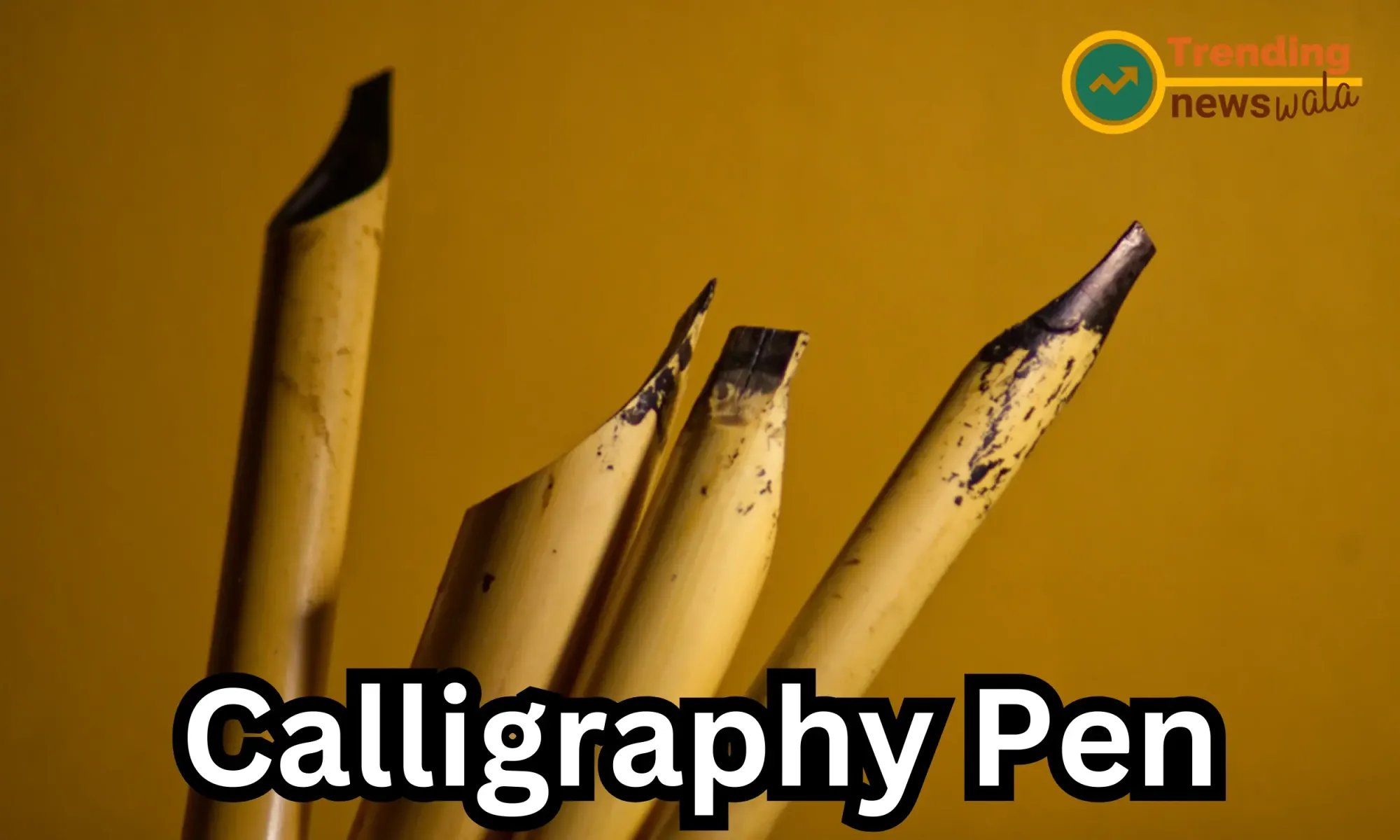
A calligraphy pen is a specialized writing instrument designed for creating decorative, artistic, and stylized writing known as calligraphy. These pens are specifically crafted to provide a wide range of line widths and to enhance the beauty and expressiveness of the written word. Here's more information about calligraphy pens:
- Nib Varieties: Calligraphy pens feature a wide variety of nibs, each designed to produce different styles of calligraphy. Common nib styles include italic, broad-edge, pointed, and flex nibs.
- Ink Flow: Calligraphy pens have controlled ink flow systems, which allow for smooth and consistent ink release. The flow can be regulated to create various line widths and styles.
- Ink Types: Calligraphy pens use various types of ink, including water-based inks, India ink, acrylic ink, or specialty calligraphy inks. The choice of ink can affect the appearance and permanence of the calligraphy.
- Line Variation: The design of the nib and the way the pen is held and applied to the paper can create line variations that give calligraphy its distinct style. Different nibs produce thicker downstrokes and thinner upstrokes.
- Nib Flexibility: Some calligraphy pens have flexible nibs that allow for more expressive and decorative writing. The pressure applied to the nib affects the width of the lines.
- Refillable and Disposable: Calligraphy pens are available in both refillable and disposable forms. Refillable calligraphy pens are eco-friendly and cost-effective in the long run.
- Versatility: Calligraphy pens are used for a wide range of creative applications, including formal invitations, wedding stationery, certificates, greeting cards, artwork, and decorative lettering.
- Maintenance: Calligraphy pens, especially refillable ones, require regular cleaning and maintenance to ensure smooth ink flow and prevent clogs.
- Environmental Considerations: Using refillable calligraphy pens can be more environmentally friendly than disposable alternatives, reducing plastic waste.
Advantages:
- Ideal for creating decorative and artistic writing.
- Provides a wide range of line widths and styles.
- Versatile for various applications, from formal documents to personal artwork.
- Offers expressive and personalized writing.
Disadvantages:
- Requires practice to master various calligraphic scripts.
- May not be as suitable for everyday writing due to the specific purpose of calligraphy.
In summary, calligraphy pens are tools specifically crafted for the art of decorative writing known as calligraphy. They offer a wide range of nib styles and ink options to create various calligraphic scripts and styles. Calligraphy pens are beloved by artists, hobbyists, and professionals for their capacity to transform writing into an art form.
Brush Pen
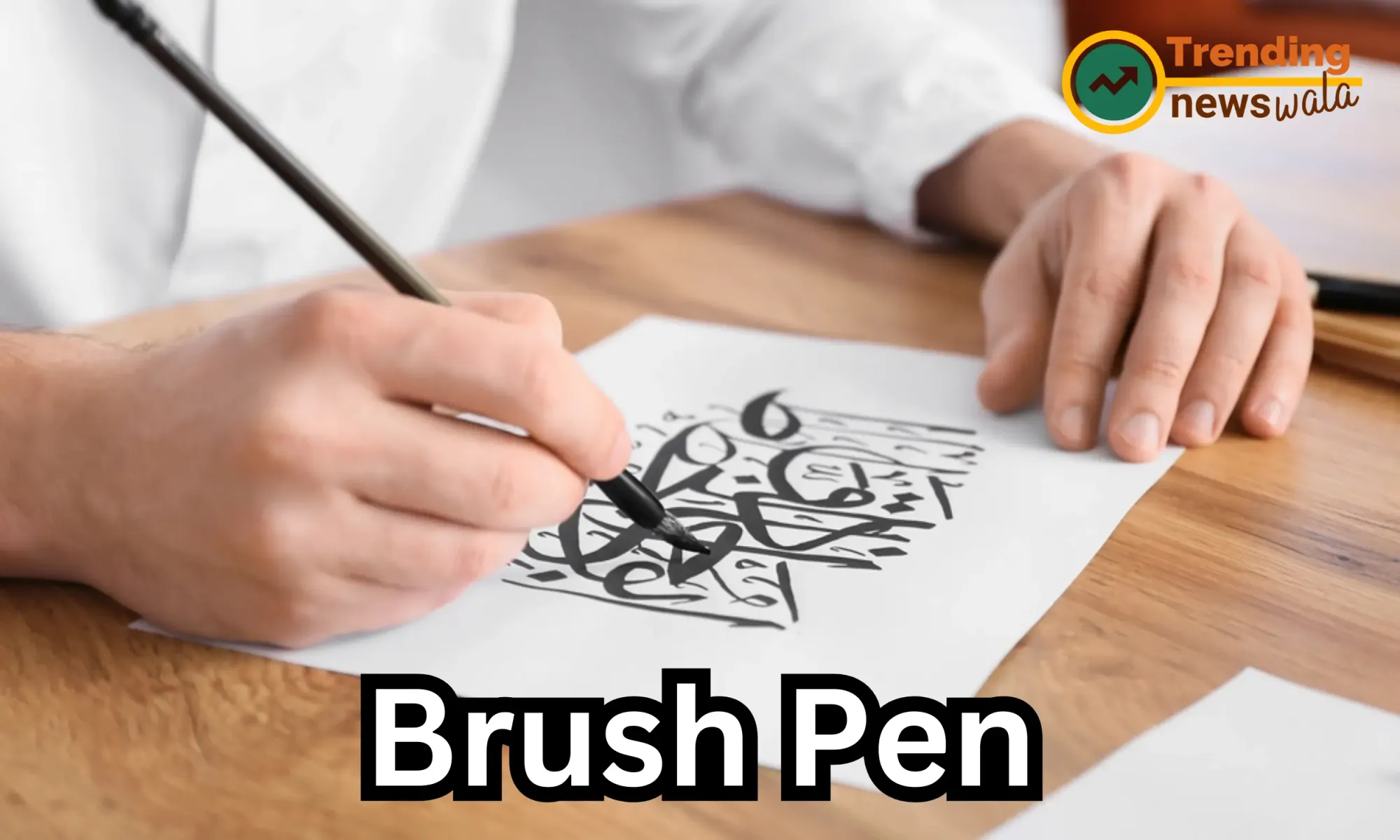
A brush pen is a writing and drawing instrument that simulates the effect of a paintbrush, allowing for expressive, calligraphic, and artistic marks. These pens feature a flexible, brush-like tip that can create a wide range of line widths and are particularly popular among artists, illustrators, calligraphers, and hobbyists. Here's more information about brush pens:
- Flexible Brush-Like Tip: The defining feature of a brush pen is its flexible tip, which resembles a paintbrush. This tip is capable of producing fine, medium, and broad lines, depending on the pressure applied and the angle of the pen.
- Ink Types: Brush pens use various types of ink, such as water-based, dye-based, pigment-based, or specialty inks. The type of ink can impact drying time, color vibrancy, and suitability for different surfaces.
- Smooth and Fluid Writing: Brush pens offer a smooth and fluid writing experience, allowing for dynamic and expressive strokes. They are favored for their ability to create intricate details and artistic flourishes.
- Line Variation: The width of the lines created by a brush pen can vary widely based on pressure and technique. This flexibility makes brush pens suitable for both fine writing and expressive artwork.
- Ink Colors: Brush pens are available in a wide range of colors, including traditional and specialty inks. Artists often appreciate the vibrant color options for illustrations and calligraphy.
- Applications: Brush pens are versatile and can be used for a variety of creative applications, such as lettering, hand lettering, calligraphy, drawing, coloring, and sketching.
- Quick Drying: The drying time of the ink depends on the type used, but many brush pen inks dry relatively quickly, reducing the risk of smudging.
- Surface Compatibility: Brush pens work well on various surfaces, including paper, sketchbooks, watercolor paper, fabric, and more. The suitability depends on the type of ink and the surface texture.
- Refillable and Disposable: Brush pens are available in both refillable and disposable forms. Refillable brush pens can be more sustainable in the long run.
- Environmental Considerations: Using refillable brush pens can be more environmentally friendly compared to disposable options, which can contribute to plastic waste.
Advantages:
- Expressive and artistic writing and drawing.
- Line variation for decorative and detailed work.
- Vibrant colors and broad ink choices.
- Suitable for a wide range of creative applications.
Disadvantages:
- The flexibility of the tip may require practice for precise control.
- Some brush pens may not hold as much ink as traditional brushes and may need frequent refilling.
In summary, brush pens are versatile, artistic, and expressive writing and drawing tools. They offer the ability to create varying line widths and detailed flourishes, making them a preferred choice for artists and creative enthusiasts. Brush pens come in various ink colors and are suitable for a wide range of applications, from calligraphy to illustrations and more.
Highlighter Pen
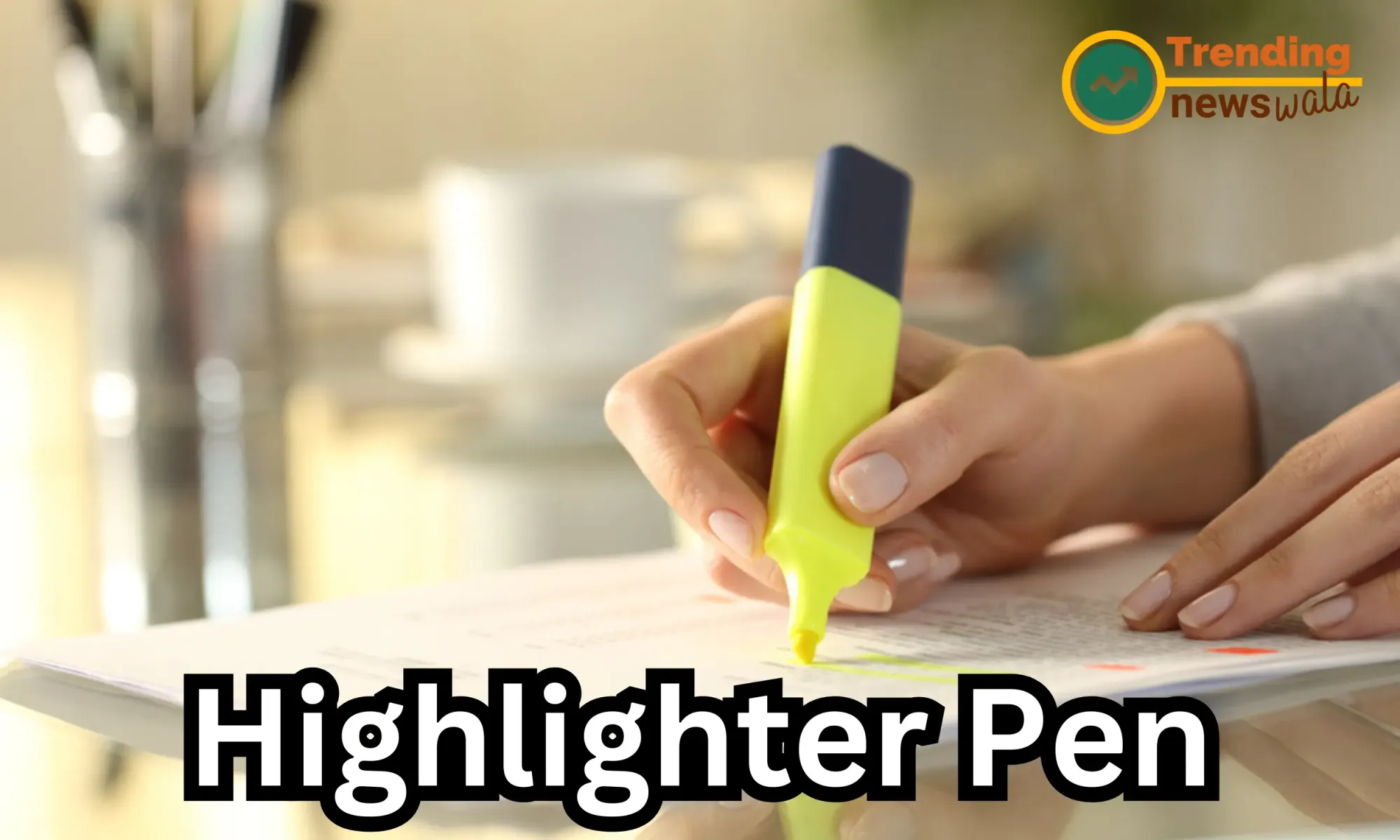
Highlighter pens are a type of marker pen designed to emphasize or mark specific text or information in documents, textbooks, and notes. They are particularly popular among students and professionals for their highlighting and organizing capabilities. Here's more information about highlighter pens:
- Ink Type: Highlighter pens typically use fluorescent ink, which is bright and easy to see on the page. The most common highlighter ink colors are yellow, pink, green, blue, and orange.
- Highlighting Function: The primary function of a highlighter pen is to make selected text or information stand out on a page. This makes it easier for the reader to locate and review key points.
- Chisel Tip: Highlighters typically have a chisel or wedge-shaped tip. This allows users to create both broad and fine lines, making them versatile for various highlighting needs.
- Quick Drying: Highlighter ink dries quickly, which reduces the risk of smudging and ink transfer to adjacent pages.
- Applications: Highlighter pens are widely used for tasks such as studying, note-taking, marking important sections in books or documents, and color-coding information.
- Versatility: In addition to highlighting text, highlighter pens are used for underlining, drawing, and creating graphic organizers, especially when combined with other colored highlighters.
- Longevity: Highlighter pens typically have a longer lifespan compared to standard markers. However, they can dry out over time if not securely capped.
- Ink Varieties: Some highlighters are designed with special ink formulations, such as gel-based, water-based, or even erasable ink, offering different features and benefits.
- Environmental Considerations: Some highlighter brands offer refillable options or use more environmentally friendly materials to reduce waste.
Advantages:
- Effective for emphasizing key information in documents.
- Quick-drying ink reduces smudging.
- Versatile for different applications, including color-coding.
- A useful tool for studying, teaching, and organizing.
Disadvantages:
- Limited color options for standard highlighters (typically bright fluorescent colors).
- May not be suitable for writing or fine detail work.
In summary, highlighter pens are a valuable tool for highlighting and organizing information in various contexts, from studying and note-taking to document review and color-coding. They are known for their quick-drying fluorescent ink and chisel tips, which allow for precise and easy highlighting.
Marker Pen
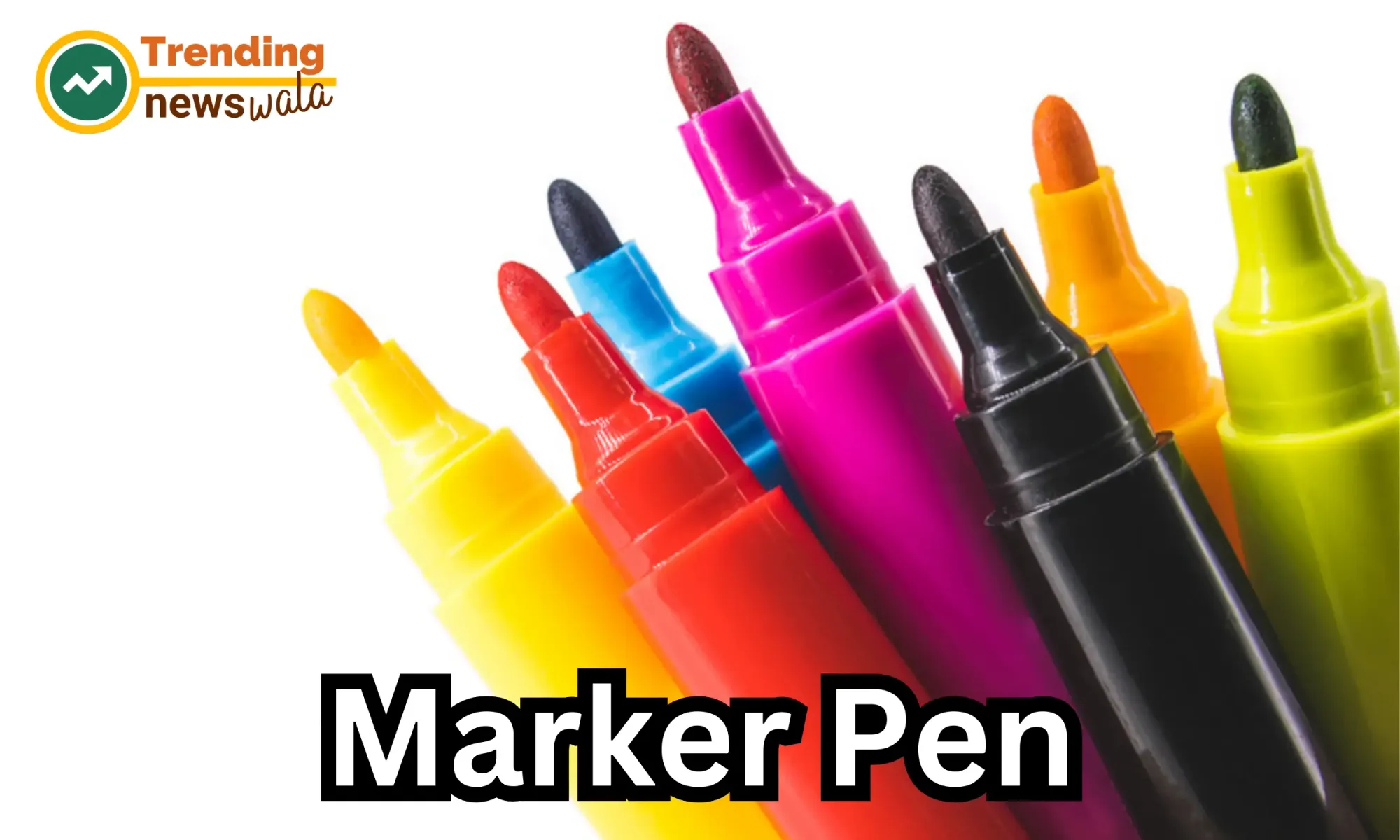
Marker pens are a category of writing and drawing tools that use a marker-like tip to deliver ink onto a surface. They come in various tip styles, ink types, and applications. Marker pens are commonly used for art, illustration, labeling, and other creative and professional tasks. Here's more information about marker pens:
- Ink Types: Marker pens use different types of ink, including alcohol-based, water-based, or permanent ink. The type of ink can affect factors like drying time, smudging, and suitability for specific surfaces.
- Tip Styles: Marker pens come with various tip styles, such as fine point, chisel tip, brush tip, and broad tip. The tip style determines the line width and application suitability.
- Line Variation: Some marker pens allow for line variation based on the pressure applied, while others provide consistent line widths.
- Ink Colors: Marker pens are available in a wide range of ink colors, including traditional, neon, pastel, metallic, and specialty colors. Artists and illustrators appreciate the color variety for creative work.
- Quick Drying: The drying time of marker ink depends on the type used. Alcohol-based inks tend to dry quickly, while water-based inks may take longer.
- Surface Compatibility: Marker pens can be used on a variety of surfaces, such as paper, cardboard, plastic, glass, metal, fabric, and more. Some marker pens are designed for specific surfaces.
- Applications: Marker pens have diverse applications, including illustration, sketching, coloring, labeling, graffiti art, graphic design, architectural drawing, and more.
- Permanent or Non-Permanent: Some marker pens are permanent, meaning the ink is designed to be resistant to fading and water. Others are non-permanent and can be erased or washed off some surfaces.
- Refillable and Disposable: Marker pens are available in both refillable and disposable forms. Refillable markers are more sustainable and cost-effective in the long run.
- Maintenance: Refillable marker pens require maintenance to replace or refill ink cartridges. Cleaning the tips can also extend the marker's lifespan.
Advantages:
- Wide range of colors and tip styles for different applications.
- Quick-drying ink reduces smudging.
- Versatile for both artistic and professional use.
- Suitable for a variety of surfaces.
Disadvantages:
- Marker tips can wear down or fray over time, affecting line quality.
- Disposable markers contribute to plastic waste.
In summary, marker pens are versatile writing and drawing tools with a wide range of applications. They are favored for their diversity in ink colors, tip styles, and suitability for various surfaces. Marker pens are commonly used in artistic, creative, and professional settings. Refillable marker options are more environmentally friendly, reducing waste.
Space Pen

A Space Pen, or Fisher Space Pen, is a specially designed writing instrument that is known for its ability to write in extreme conditions, including zero gravity, underwater, in extreme temperatures, and on oily or greasy surfaces. These pens were developed by Paul C. Fisher and have become iconic for their reliability and performance in challenging environments. Here's more information about Space Pens:
- Ink Cartridge: Space Pens use a pressurized ink cartridge that contains a special ink. This cartridge is hermetically sealed, preventing air and moisture from affecting the ink's performance.
- Pressurized Ink: The ink inside a Space Pen is pressurized, meaning it's forced out of the cartridge by nitrogen gas. This pressurization ensures a consistent and reliable flow of ink, even in unusual conditions.
- Extreme Conditions: Space Pens are designed to write in a wide range of extreme conditions, such as zero gravity, underwater, over grease, oil, and on wet paper. They are especially popular with astronauts, divers, and people who work in challenging environments.
- Temperature Tolerance: Space Pens can write in temperatures ranging from -30°F to 250°F (-35°C to 121°C), making them suitable for a wide range of environments, from the freezing cold of space to the heat of the desert.
- Ink Types: Space Pens are available with different types of ink, including ballpoint ink, gel ink, and more, allowing users to choose the one that best suits their preferences.
- Refillable: Space Pens are refillable, meaning you can replace the ink cartridge when it runs out, extending the pen's lifespan and reducing waste.
- Varieties: Fisher Space Pen offers a range of pen models and styles, including pocket-sized pens, stylus pens, and pen/pencil combinations, allowing users to find the right pen for their needs.
- Applications: Space Pens are used not only in space exploration but also in many other fields, including aviation, underwater exploration, military operations, and everyday writing.
Advantages:
- Reliable and functional in extreme conditions.
- Refillable, reducing waste.
- Available in different ink types and pen styles.
- Suitable for a variety of professional and everyday uses.
Disadvantages:
- Higher initial cost compared to standard pens.
- May not have the same aesthetic appeal as some other pens.
In summary, the Space Pen, or Fisher Space Pen, is a reliable and versatile writing instrument designed to perform in the harshest of conditions. Its pressurized ink system ensures consistent writing, making it a trusted tool for astronauts, divers, and professionals working in challenging environments. These pens are available in various models and ink types, making them suitable for a wide range of applications.
Erasable Pen
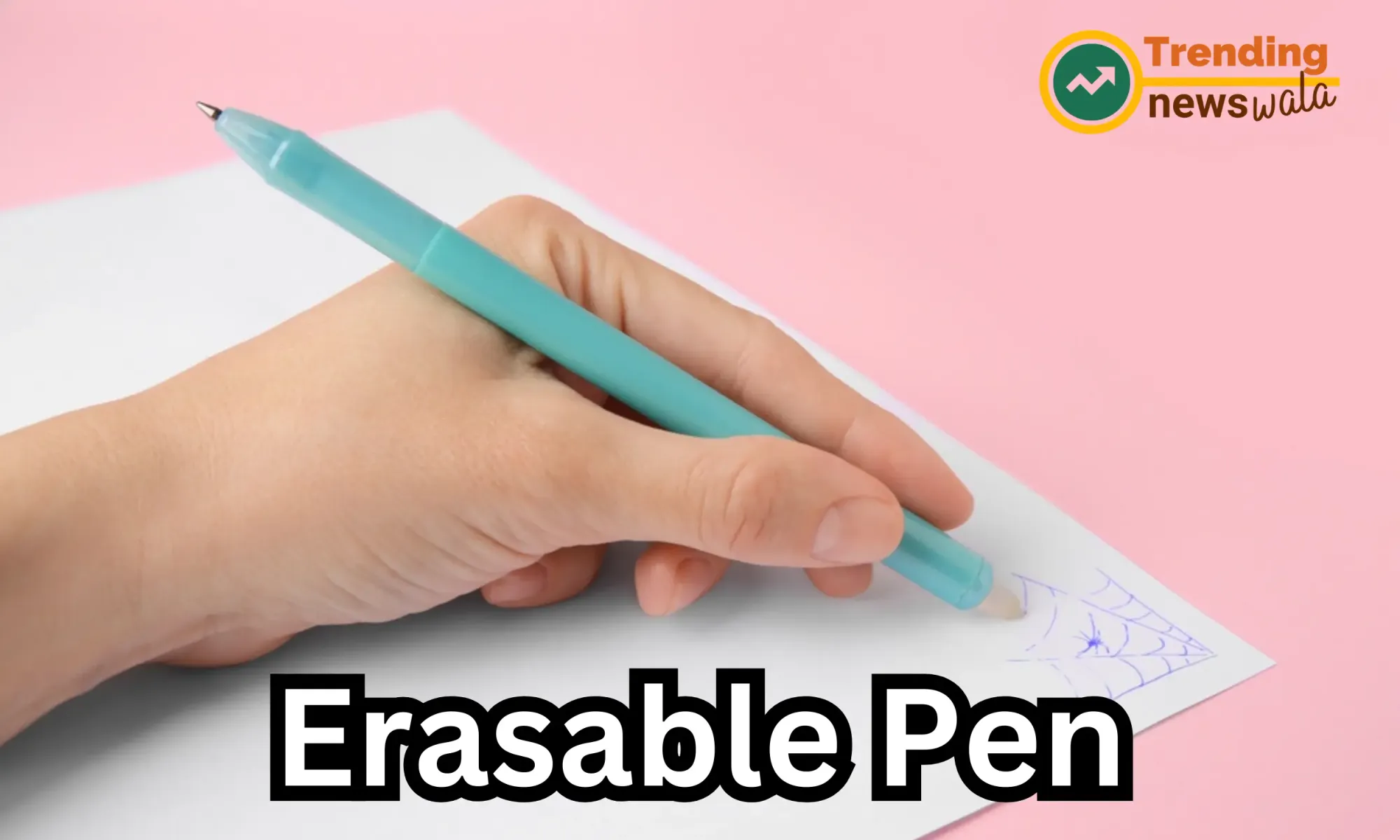
Erasable pens, as the name suggests, are writing instruments that use ink that can be effectively erased. These pens are designed for people who want the convenience of a pen but with the option to make corrections or changes like a pencil. Here's more information about erasable pens:
- Ink Type: Erasable pens use a special type of ink that is heat-sensitive. The ink disappears or becomes transparent when exposed to friction or heat.
- Thermo-Sensitive Ink: The ink used in erasable pens is thermo-sensitive, meaning that it changes appearance when subjected to heat. This property is what allows it to be erased.
- Erasers: Erasable pens come with erasers on the back end, similar to pencils. These erasers are used to create friction and generate heat to make the ink disappear or become less visible.
- Quick Drying: Erasable pen ink typically dries quickly after writing, which reduces the risk of smudging. However, this ink may not be as quick-drying as some other pen types.
- Line Consistency: Erasable pens provide consistent lines and are suitable for everyday writing tasks. They are available in various tip sizes and ink colors.
- Correction Capabilities: Erasable pens are popular for note-taking, marking corrections in documents, and other tasks that require the ability to erase and rewrite.
- Ink Longevity: The longevity of erasable pen ink can vary. It may become less visible over time or when exposed to extreme temperatures. The erased ink may reappear in cold conditions but can be re-erased when warmed.
- Applications: Erasable pens are suitable for a range of tasks where you want the ease of a pen with the ability to correct mistakes. They are often used by students, teachers, and professionals for note-taking and document editing.
- Environmental Considerations: Erasable pens are disposable, and their use can generate plastic waste. Using a refillable pen with conventional ink or other reusable writing instruments may be more environmentally friendly.
Advantages:
- Convenient for writing with the option to erase and correct.
- Suitable for everyday writing tasks, especially when a clean and professional appearance is desired.
- Come in various colors and tip sizes.
Disadvantages:
- The erased ink may become visible again in cold conditions.
- May not be suitable for archival documents or legal records.
- The eraser may wear down over time, affecting its effectiveness.
In summary, erasable pens provide the convenience of a pen with the added benefit of being able to erase and correct mistakes, making them popular for note-taking and document editing. However, they may not be suitable for situations where permanence and archival quality are required.
Multi-Pen
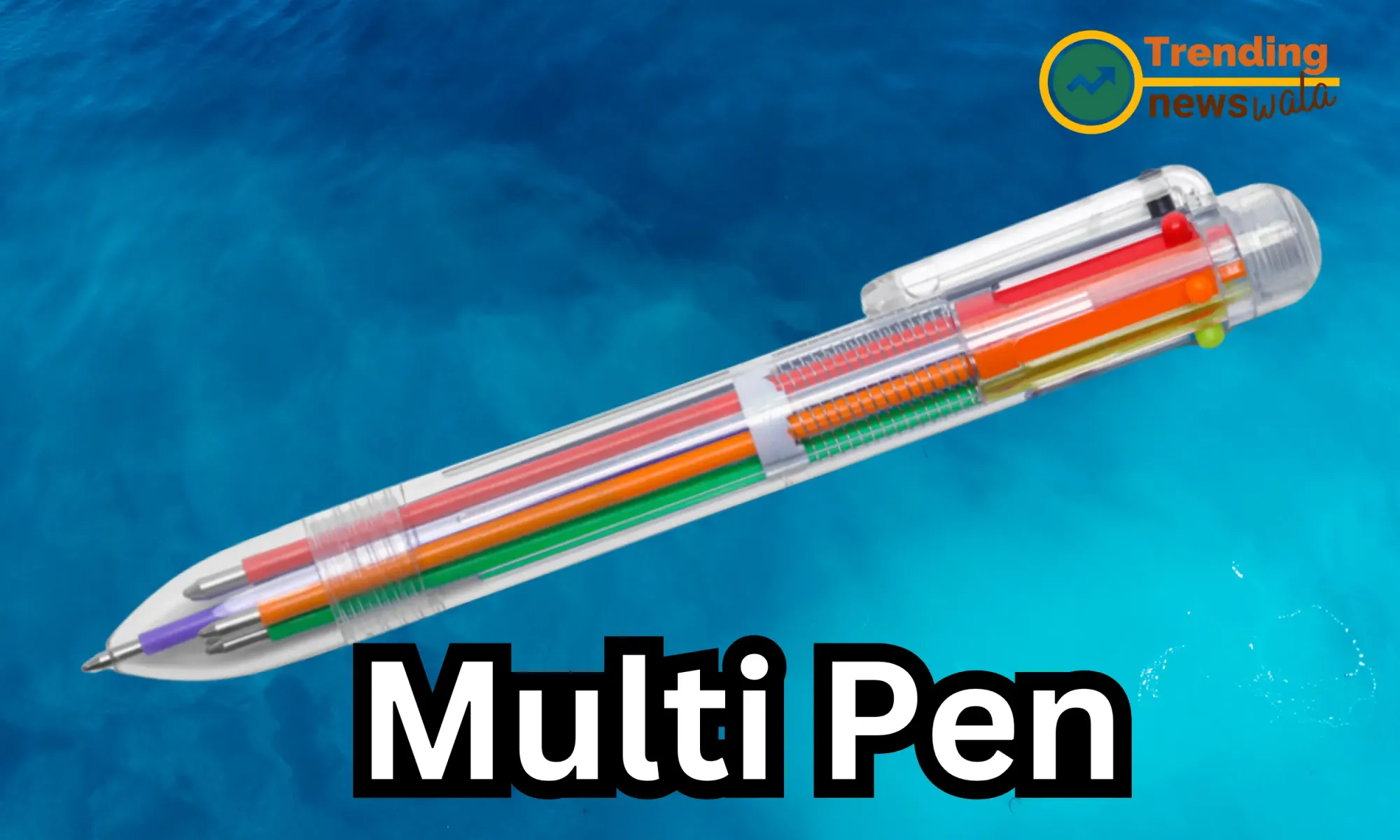
A multi-pen, also known as a multifunction pen or multi-color pen, is a versatile writing instrument that combines two or more different ink colors or types within a single pen. These pens are designed to be convenient tools for tasks that require the use of various colors or writing styles. Here's more information about multi-pens:
- Multiple Ink Colors: Multi-pens typically feature two, three, four, or more ink colors within a single pen. Common ink colors include black, blue, red, green, and other colors depending on the model.
- Ink Types: In addition to various colors, multi-pens can include different ink types, such as ballpoint, gel, and mechanical pencil mechanisms. This allows for a combination of writing styles in one pen.
- Mechanisms: Multi-pens use a mechanism that allows users to switch between ink colors or types with a simple click or twist of the pen. Some multi-pens have a rotating barrel that aligns with the desired color, while others use a retractable mechanism.
- Versatility: Multi-pens are versatile tools suitable for a variety of tasks, including color-coding, note-taking, drawing, editing, and highlighting.
- Applications: Multi-pens are popular among students, professionals, and individuals who need to use different colors or writing styles in their work. They are particularly useful for organizing and prioritizing information.
- Compact Design: Multi-pens are typically compact and convenient for carrying in a pocket or pencil case, which makes them a practical choice for people on the go.
- Refillable: Many multi-pens are refillable, allowing users to replace the ink cartridges when they run out, reducing waste and increasing the pen's lifespan.
Advantages:
- Convenience of multiple ink colors or types in a single pen.
- Versatile for various tasks and applications.
- Compact and portable for everyday use.
- Available with different combinations of ink colors and types.
Disadvantages:
- Limited ink capacity for each color or type.
- Some multi-pens may have a bulkier design compared to single-ink pens.
In summary, multi-pens offer the convenience of multiple ink colors or types in a single, compact, and portable writing instrument. They are practical for individuals who need to switch between colors or writing styles without carrying multiple pens. Multi-pens are commonly used for note-taking, organization, and tasks that require color-coding or highlighting.
Stylus Pen
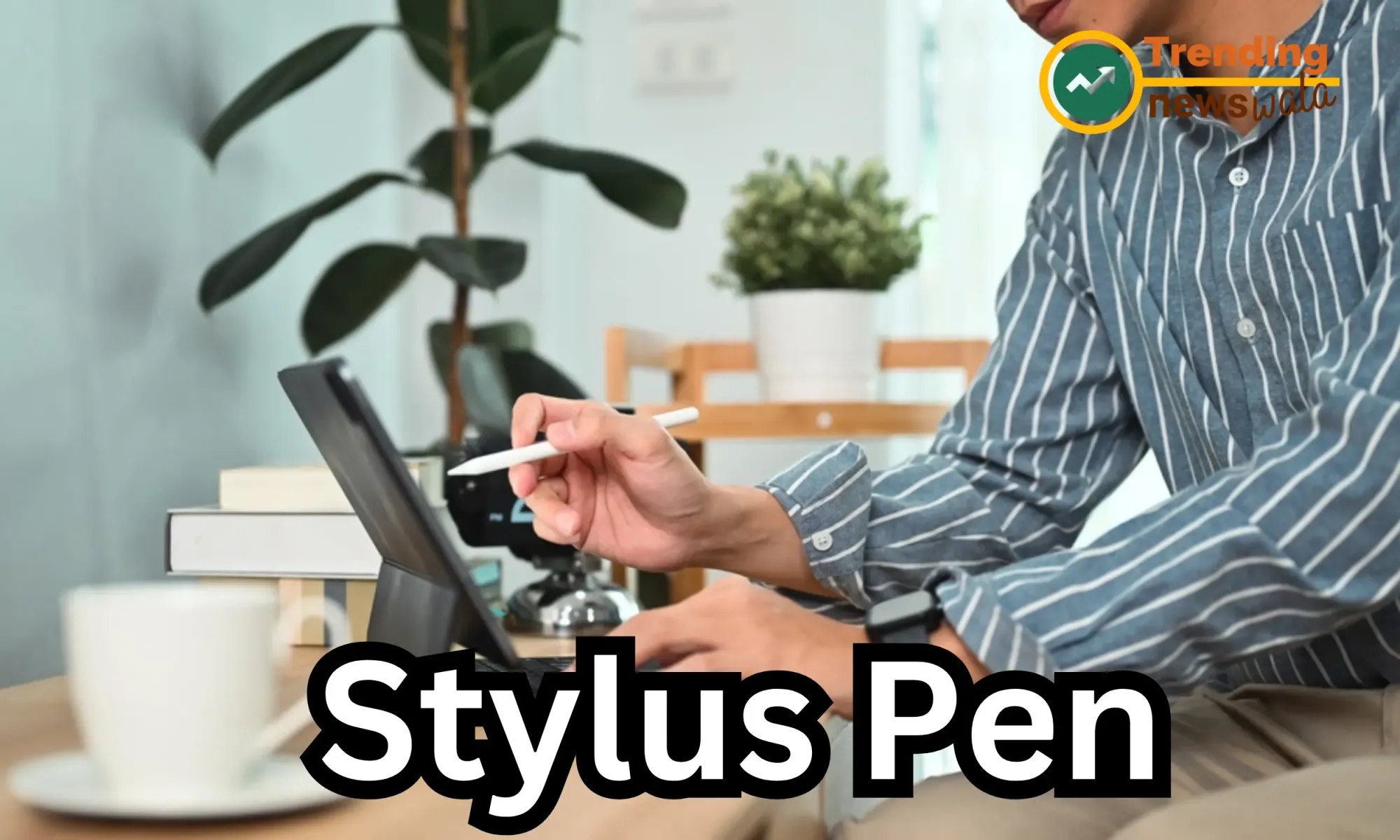
A stylus pen, often referred to as simply a stylus, is a digital or analog writing and drawing instrument designed for use on various electronic devices, touchscreens, and graphics tablets. These pens are particularly popular for digital art, note-taking, and precise interactions with touch-sensitive screens. Here's more information about stylus pens:
Digital Stylus
- Touchscreen Compatibility: Stylus pens are designed to work with touchscreen devices such as smartphones, tablets, and graphic drawing tablets. They allow for precise input and interaction with these screens.
- Fine-Point Nib: Stylus pens feature a fine-point or sensitive nib that mimics the touch of a finger, but with greater precision. The nib can be made of different materials, including rubber, conductive foam, or plastic.
- Pressure Sensitivity: Many digital stylus pens offer pressure sensitivity, which means the pen can detect how hard it is pressed against the screen. This feature is essential for digital artists and designers.
- Erasing Capabilities: Some digital stylus pens have an eraser function on the other end or a button that can be used to trigger the eraser tool in compatible applications.
- Tilt and Angle Sensing: Advanced stylus pens can detect the tilt and angle of the pen, allowing for more natural drawing and shading effects.
- Compatibility: Stylus pens are designed to work with specific devices or operating systems. Some are universal and can be used on a wide range of touchscreens, while others are tailored for specific brands and models.
Analog Stylus:
- Ink or Pencil-Like: Analog stylus pens resemble traditional pens or pencils and are used for writing or drawing on paper or other physical surfaces.
- Variety of Tips: Analog stylus pens may have a variety of tips, including ballpoint, rollerball, or felt tips, and can be used with traditional paper notebooks and devices.
- Ink Refills: Some analog stylus pens are refillable, allowing you to replace the ink cartridge or pencil lead when it runs out.
Advantages:
- Precise input and interaction with touchscreens.
- Pressure sensitivity and tilt sensing for digital artists.
- Convenient for note-taking and digital sketching.
- Ideal for avoiding fingerprint smudges on touchscreens.
Disadvantages:
- Digital stylus pens may have compatibility limitations with certain devices.
- Analog stylus pens may require periodic refills or lead replacement.
- Some stylus pens can be relatively expensive, especially those with advanced features.
In summary, stylus pens come in both digital and analog forms and are versatile tools for precise writing, drawing, and interaction with electronic devices. Digital stylus pens are essential for digital artists, designers, and those who require precision on touchscreens, while analog stylus pens are used for traditional writing and drawing.
Inkless Metal Pen
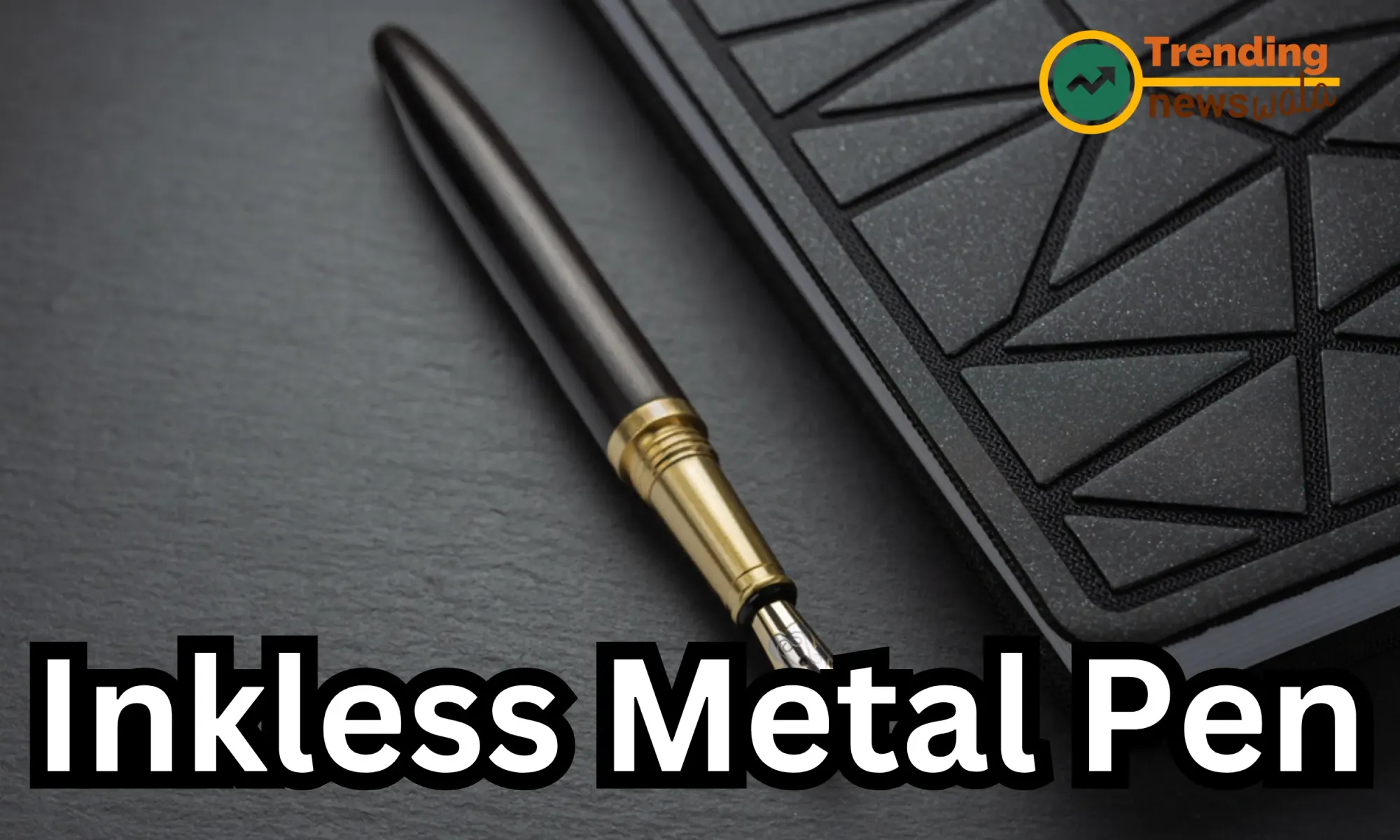
An inkless metal pen, often known as a metal point pen or a metal ink pen, is a unique writing instrument that doesn't use conventional ink or refills. Instead, it relies on a metal tip that leaves a permanent mark on paper through a process involving oxidation. These pens are often appreciated for their durability and the fact that they don't require ink replacements. Here's more information about inkless metal pens:
- No Ink or Refills: The defining feature of inkless metal pens is that they do not use conventional ink or refills. They don't require ink cartridges or inkwells, making them a low-maintenance option.
- Metal Tip: Inkless metal pens have a metal tip, usually made of alloys like stainless steel, aluminum, or brass. This tip leaves a mark on paper through a process called oxidation, which darkens the paper without actually using ink.
- Permanent Marks: The marks made by inkless metal pens are permanent and resistant to water and other environmental factors. They do not smudge or fade over time.
- No Refills or Replacement Parts: Since there is no ink to run out, inkless metal pens are known for their long lifespan. They can last for years without the need for refills or replacement parts.
- Environmentally Friendly: The lack of ink and disposable parts makes inkless metal pens an environmentally friendly choice, reducing waste.
- Smooth Writing: The metal tip provides a smooth writing experience, leaving fine, consistent lines on paper.
- Applications: Inkless metal pens are versatile and can be used for a range of tasks, such as note-taking, drawing, sketching, and marking. They are especially useful in environments where traditional ink may be less practical.
Advantages:
- No need for ink refills or replacement parts.
- Permanent and non-smudging marks.
- Environmentally friendly due to the lack of disposable components.
- Versatile for various writing and marking tasks.
Disadvantages:
- Limited to making marks on paper or similar surfaces.
- Some users may prefer traditional ink for color variety.
In summary, inkless metal pens are writing instruments that use a metal tip to leave permanent marks on paper through oxidation, eliminating the need for ink or refills. They are known for their long lifespan, durability, and eco-friendly nature. These pens are suitable for various writing and marking tasks and are especially practical in situations where traditional ink may not be ideal.
Marker Pen for Whiteboards
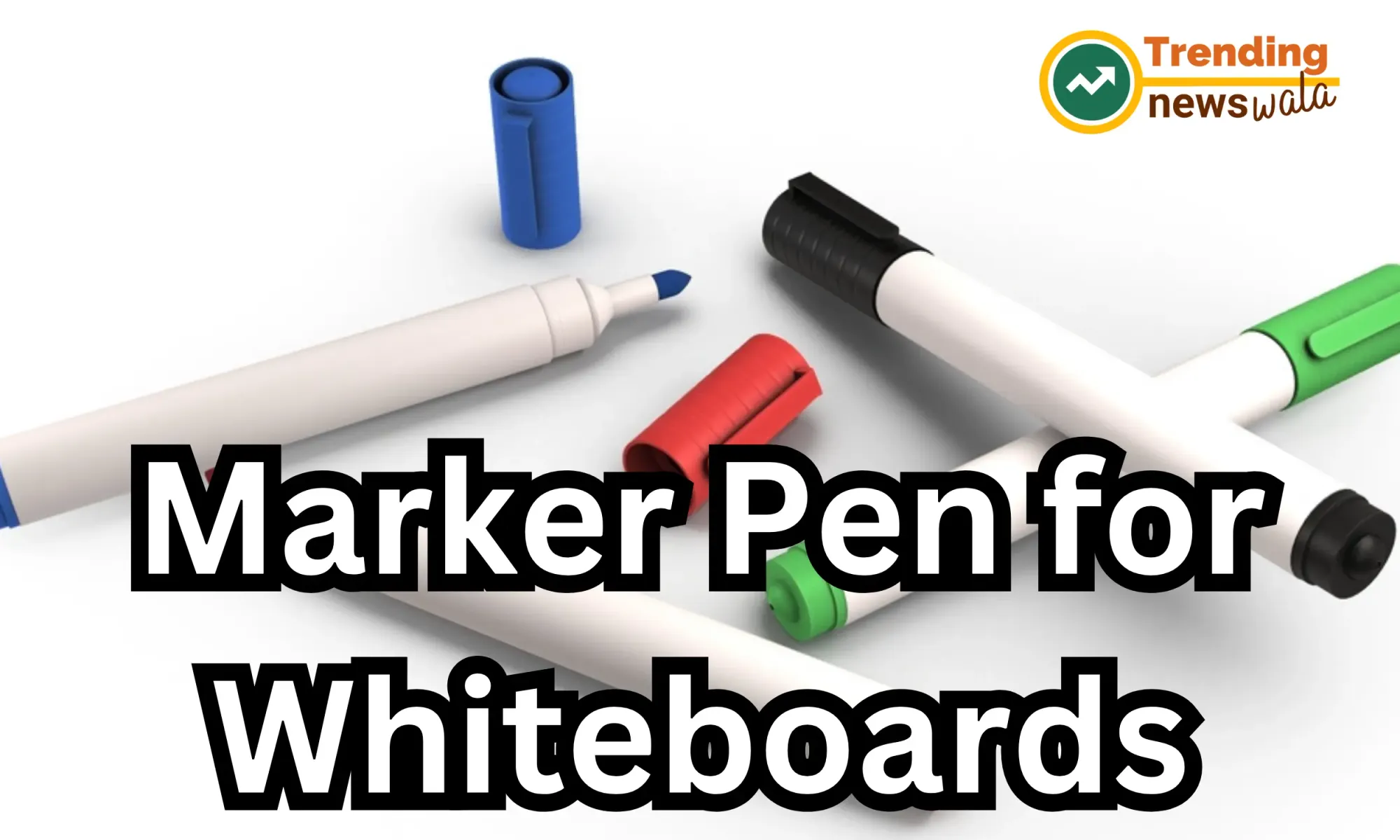
Marker pens for whiteboards, commonly referred to as whiteboard markers or dry erase markers, are designed for writing and drawing on whiteboard surfaces, glass, and similar non-porous materials. They offer the advantage of easy erasability and are popular in classrooms, offices, and various professional settings. Here's more information about marker pens for whiteboards:
- Ink Type: Whiteboard markers use a special ink that contains pigments suspended in a volatile solvent. This ink is designed to be easily erased from non-porous surfaces.
- Color Variety: Whiteboard markers are available in various colors, with black, blue, red, and green being the most common. Some brands offer additional colors like purple, orange, and brown.
- Fine-Tip or Chisel-Tip: Whiteboard markers typically come in two main tip styles: fine-tip and chisel-tip. Fine-tip markers are ideal for writing and drawing precise lines, while chisel-tip markers offer a variable line width for more versatile use.
- Low Odor: Many whiteboard markers are designed to have low or no odor, making them suitable for use in enclosed spaces without causing discomfort.
- Erasability: Whiteboard markers are known for their easy erasability. They can be wiped off with a dry eraser or a damp cloth, leaving no residue behind.
- Quick Drying: Whiteboard marker ink dries quickly to prevent smudging, making them practical for fast-paced presentations or note-taking.
- Refillable and Disposable: Some whiteboard markers are refillable, allowing you to replace the ink when it runs out. Others are disposable and are replaced when the ink is depleted.
- Applications: Whiteboard markers are widely used in classrooms, boardrooms, offices, and other professional settings for writing, drawing, brainstorming, and making presentations on whiteboard surfaces.
- Ink Quality: High-quality whiteboard markers are less likely to produce ghosting or staining on whiteboard surfaces, which can occur with lower-quality markers.
Advantages:
- Easy erasability without leaving residue.
- Quick-drying ink for smudge-free writing.
- Versatile tip options for different writing and drawing styles.
- Low odor for comfortable use in enclosed spaces.
Disadvantages:
- Not suitable for porous surfaces like paper.
- Over time, markers may become less erasable, and whiteboard surfaces can develop stubborn stains.
In summary, whiteboard markers are writing and drawing tools specifically designed for use on whiteboard surfaces. They offer easy erasability, quick drying, and low odor, making them ideal for presentations, teaching, office work, and various professional applications. It's important to choose high-quality markers to ensure the best performance and minimize the risk of staining on whiteboard surfaces.
Quill Pen
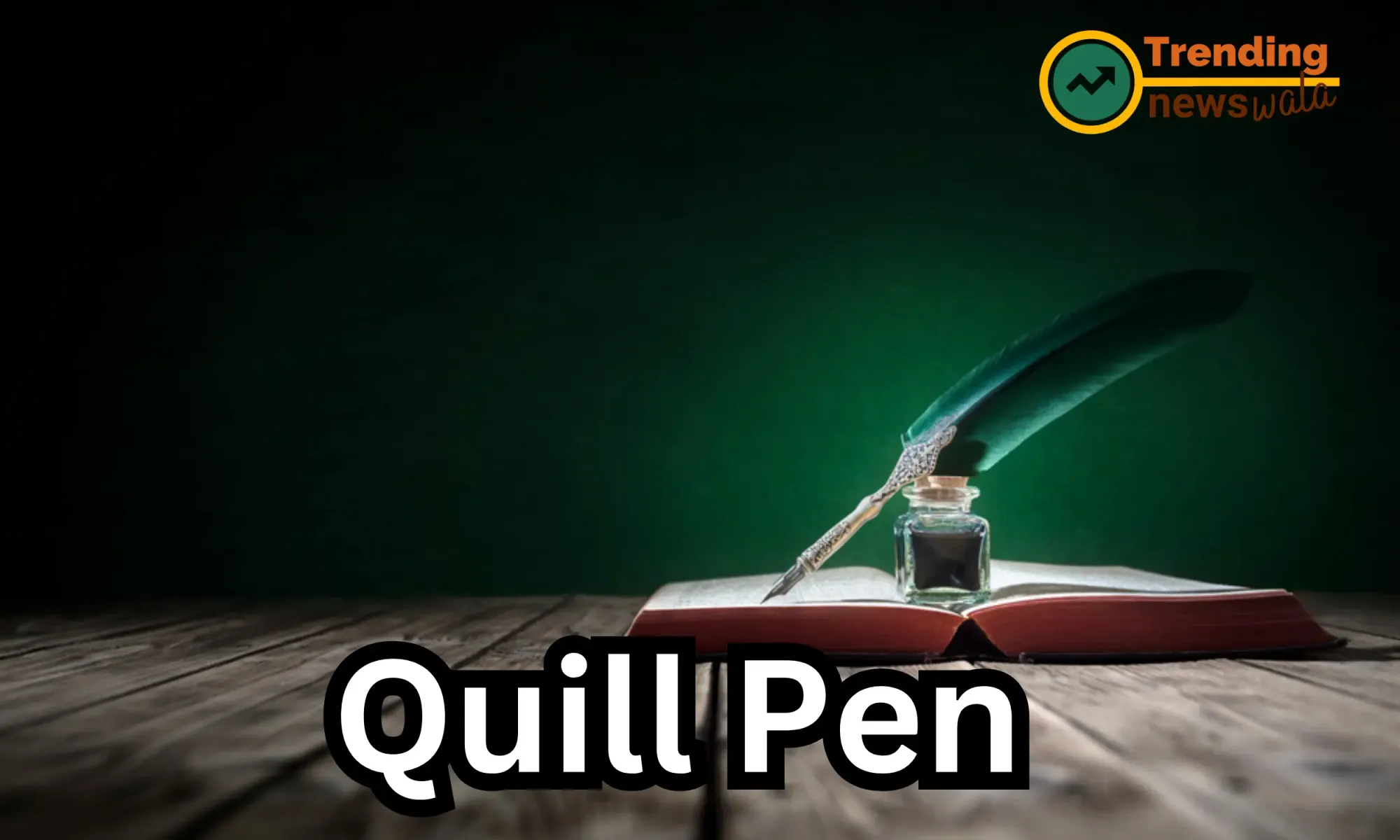
A quill pen is a historic writing instrument made from a bird's feather, typically the primary flight feather of a large bird, such as a goose, swan, or turkey. It was widely used for writing before the invention of modern steel nib pens, fountain pens, and, eventually, ballpoint pens. Quill pens are known for their association with traditional calligraphy and the art of handwriting. Here's more information about quill pens:
- Feather Material: Quill pens are crafted from the primary flight feathers of large birds. These feathers are carefully selected for their size, strength, and flexibility. Swan and goose feathers were among the most prized for quill pens.
- Nib Preparation: To create the nib of a quill pen, the feather's shaft is cut into a tapered, pointed shape. The tip is then split and trimmed to form a nib with a slit that allows ink to flow.
- Inkwell: Quill pens are dipped into an inkwell to load them with ink. The ink used can be various types, including iron gall ink or other historic inks.
- Line Variation: Quill pens are known for their ability to produce lines of varying width based on the pressure applied. More pressure results in broader lines, while less pressure creates finer lines.
- Maintenance: Quill pens require regular maintenance to keep them in working condition. This includes cleaning the nib and ensuring it remains sharp.
- Erasability: Quill pen ink, especially traditional inks like iron gall, can be challenging to erase or correct, so users had to write with precision.
- Applications: Quill pens were used for a wide range of applications, including writing letters, documents, manuscripts, and creating decorative and formal calligraphy.
- Historical Significance: Quill pens have a rich historical and cultural significance, having been used for centuries by notable figures in literature, art, and governance. They played a vital role in the preservation of knowledge and communication.
Advantages:
- Crafted for precision writing and calligraphy.
- Delicate line variation based on pressure.
- Historical and artistic significance.
Disadvantages:
- Require regular maintenance to remain functional.
- Can be messy and are less convenient than modern pens.
- Not erasable or easily corrected.
In summary, quill pens are iconic writing instruments with a long history and cultural significance. They were widely used for precise handwriting and calligraphy, and while they have been largely replaced by more convenient and low-maintenance writing tools, quill pens continue to hold a special place in the world of art, historical documentation, and calligraphy.
Each type of pen has its own characteristics and is suitable for specific tasks or personal preferences. Choosing the right pen depends on your needs, whether it's for everyday writing, art, or special applications.

Certainly! Here are some frequently asked questions (FAQ) about different types of pens:
What is a ballpoint pen, and how does it work?
A ballpoint pen is a common writing instrument that uses a tiny ball bearing in the tip to distribute ink as you write. It relies on the rolling action of the ball to dispense oil-based or gel-based ink onto the paper.
What makes gel pens different from other pens?
Gel pens use a water-based gel ink, which provides a smooth and vibrant writing experience. They are known for their bright colors and the ability to write on various surfaces.
How do fountain pens differ from ballpoint pens?
Fountain pens have a nib that dispenses ink onto paper. They offer a more elegant writing experience and come in various styles. Unlike ballpoint pens, they typically use liquid ink and may require refilling.
What is the main advantage of rollerball pens?
Rollerball pens combine the smoothness of fountain pens with the convenience of ballpoint pens. They use water-based liquid or gel ink, resulting in a fluid and expressive writing experience.
What are felt-tip pens, and what are they commonly used for?
Felt-tip pens, also known as marker pens, have a porous tip that dispenses ink. They are often used for coloring, drawing, and precise writing. They come in a wide range of colors.
How can I use a calligraphy pen effectively?
Calligraphy pens are designed for decorative writing. To use them effectively, select the appropriate nib style for the calligraphic script you want to create, and practice stroke and letter formations.
What is the main application of brush pens?
Brush pens have a flexible brush-like tip, making them ideal for artistic and calligraphic writing, as well as drawing and painting. They offer versatility in line thickness and style.
How do highlighter pens work, and what are they commonly used for?
Highlighter pens use fluorescent ink in various colors to emphasize or mark important text in documents. They have a chisel or fine tip and are popular for studying and note-taking.
What types of ink do marker pens use, and when should they be used?
Marker pens use various types of ink, such as alcohol-based, water-based, or permanent ink. They are commonly used for labeling, coloring, and creating bold, colorful lines.
What are space pens, and what makes them unique?
Space pens are designed to write in extreme conditions, including zero gravity and underwater. They use a pressurized ink cartridge that allows them to write in a wide range of environments.
How do erasable pens work, and are they suitable for important documents?
Erasable pens use ink that can be erased using an attached eraser or a separate eraser. While they are handy for making corrections, they may not be suitable for permanent records as the ink can fade over time.
What are multi-pens, and how can they be used effectively?
Multi-pens, also known as multi-function pens, have multiple ink colors or features in one pen body. They are great for color-coding notes, sketching, and having different writing options in a single pen.
What is the purpose of stylus pens, and where are they commonly used?
Stylus pens have a soft tip designed for use on touchscreens, such as smartphones and tablets. They allow for precise navigation, drawing, and input on electronic devices.
How do inkless metal pens work, and what is their main advantage?
Inkless metal pens leave a mark without using ink. They work by oxidizing the writing surface, typically paper, and are known for their longevity and the absence of the need for ink refills.
What are some common applications for marker pens designed for whiteboards?
Marker pens for whiteboards use dry-erase ink that can be easily wiped off whiteboard surfaces. They are commonly used for presentations, teaching, and collaborative work.
Are quill pens still in use today, and for what purposes?
Quill pens, historically made from bird feathers, are still used today, especially for calligraphy and decorative writing. They provide a traditional and artistic writing experience.
These FAQs provide information about various types of pens and their characteristics, helping you choose the right pen for your specific needs and preferences.



